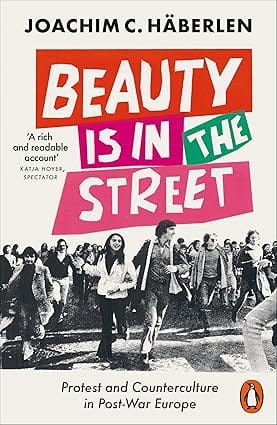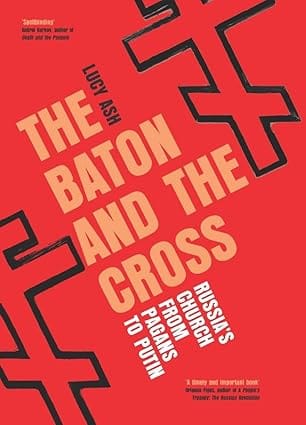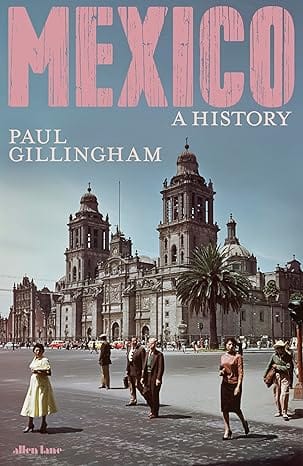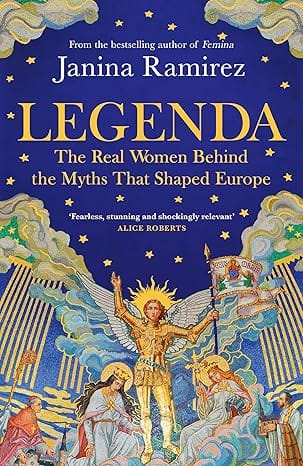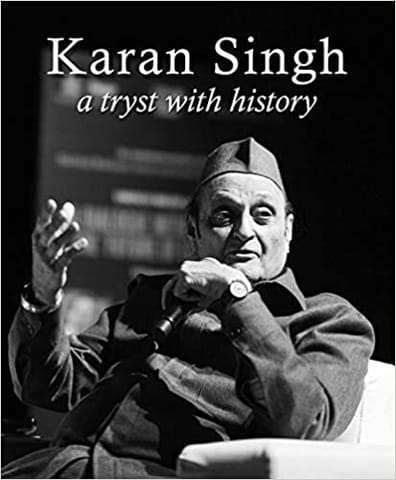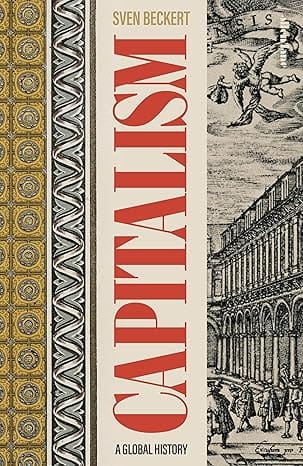WELCOME TO MIDLAND BOOK SHOP!
SHOP FOR
- Non-ficton
- Non-ficton
- Contemporary Fiction
- Contemporary Fiction
- Children
- Children
- Comics & Graphic Novels
- Comics & Graphic Novels
- Non-Fiction
- Non-Fiction
- Fiction
- Fiction
Shop No.20, Aurobindo Palace Market, Hauz Khas, Near Church +91 9818282497 | 011 26867121 110016 New Delhi IN
Midland The Book Shop ™
Shop No.20, Aurobindo Palace Market, Hauz Khas, Near Church +91 9818282497 | 011 26867121 New Delhi, IN
+919871604786 https://www.midlandbookshop.com/s/607fe93d7eafcac1f2c73ea4/69453da445ba84d539b38f9a/black-yellow-simple-bold-youtube-channel-logo-400-x-100-px-1--480x480.png" [email protected]9780141994963 6733460bfa6180002b4f8903 Beauty Is In The Street Protest And Counterculture In Post-war Europe https://www.midlandbookshop.com/s/607fe93d7eafcac1f2c73ea4/6733460cfa6180002b4f890c/81am5k6fb-l-_sy425_.jpg 9780141994963
An electrifying history of protest and its transformations in post-war Europe
In post-war Europe, protest was everywhere. On both sides of the Iron Curtain, from Paris to Prague, Milan to Wroclaw, ordinary people took to the streets, fighting for a better world. Their efforts came to a head most dramatically in 1968 and 1989, when mass movements swept Europe and rewrote its history.
In the decades between, Joachim C. Häberlen argues, new movements emerged that transformed the nature of protesting. Activism moved beyond traditional demonstrations, from squatting to staging 'happenings' and camping out at nuclear power plants. People protested in the way they dressed, the music they listened to, the lovers they slept with, the clubs where they danced all night. New movements were born, notably anti-racism, women's liberation, gay liberation and environmentalism. And protest turned inward, as activists experimented with new ways of living and feeling, from communes to group therapy, in their efforts to live a better life in the here and now.
Some of these struggles succeeded, others failed. But successful or not, their history provides a glimpse into roads not taken, into futures that did not happen. The stories in Häberlen's book invite us to imagine different futures; to struggle, to fail, and to try again. In a time when we are told that there are no alternatives, they show us that there could be another way.
In post-war Europe, protest was everywhere. On both sides of the Iron Curtain, from Paris to Prague, Milan to Wroclaw, ordinary people took to the streets, fighting for a better world. Their efforts came to a head most dramatically in 1968 and 1989, when mass movements swept Europe and rewrote its history.
In the decades between, Joachim C. Häberlen argues, new movements emerged that transformed the nature of protesting. Activism moved beyond traditional demonstrations, from squatting to staging 'happenings' and camping out at nuclear power plants. People protested in the way they dressed, the music they listened to, the lovers they slept with, the clubs where they danced all night. New movements were born, notably anti-racism, women's liberation, gay liberation and environmentalism. And protest turned inward, as activists experimented with new ways of living and feeling, from communes to group therapy, in their efforts to live a better life in the here and now.
Some of these struggles succeeded, others failed. But successful or not, their history provides a glimpse into roads not taken, into futures that did not happen. The stories in Häberlen's book invite us to imagine different futures; to struggle, to fail, and to try again. In a time when we are told that there are no alternatives, they show us that there could be another way.
Review
Well written and informative ... The stories of Provo and other groups, less mythologised than the brick-throwers of 1968 but equally important, illuminate the pages of this book, showing that their efforts 'changed the society in which we live' not merely by achieving things, but also by encouraging us to try it ourselves. -- Anna Aslanyan - Financial Times
[Haeberlen's] particular strength is in covering not just protests in the West, such as the 1968 movements, but on the other side of the Iron Curtain ... intricate details ... a rich and readable account of left-wing activism in the West and opposition to Soviet-style communism in the East. -- Katja Hoyer - The Spectator
An amiable history of countercultural agitators, from Amsterdam’s anti-car anarchists to Poland’s ‘revolution of dwarfs’, shows the myriad faces of postwar dissent ... A dream, perhaps, but one that still sounds worth fighting for, even beautiful.
[Haeberlen's] particular strength is in covering not just protests in the West, such as the 1968 movements, but on the other side of the Iron Curtain ... intricate details ... a rich and readable account of left-wing activism in the West and opposition to Soviet-style communism in the East. -- Katja Hoyer - The Spectator
An amiable history of countercultural agitators, from Amsterdam’s anti-car anarchists to Poland’s ‘revolution of dwarfs’, shows the myriad faces of postwar dissent ... A dream, perhaps, but one that still sounds worth fighting for, even beautiful.
in stockINR 719
1 1
Email ID already exists!
Your Current password is incorrect
Password Updated Successfully
Thanks for your Feedback
Beauty Is In The Street Protest And Counterculture In Post-war Europe
ISBN: 9780141994963
₹719
₹899 (20% OFF)SIZE GUIDE
Sold By: Hauz Khas - Aurobindo Market
Details
- ISBN: 9780141994963
- Author: Joachim C Hberlen
- Publisher: Penguin Books
- Pages: 496
- Format: Paperback
Book Description
An electrifying history of protest and its transformations in post-war Europe
In post-war Europe, protest was everywhere. On both sides of the Iron Curtain, from Paris to Prague, Milan to Wroclaw, ordinary people took to the streets, fighting for a better world. Their efforts came to a head most dramatically in 1968 and 1989, when mass movements swept Europe and rewrote its history.
In the decades between, Joachim C. Häberlen argues, new movements emerged that transformed the nature of protesting. Activism moved beyond traditional demonstrations, from squatting to staging 'happenings' and camping out at nuclear power plants. People protested in the way they dressed, the music they listened to, the lovers they slept with, the clubs where they danced all night. New movements were born, notably anti-racism, women's liberation, gay liberation and environmentalism. And protest turned inward, as activists experimented with new ways of living and feeling, from communes to group therapy, in their efforts to live a better life in the here and now.
Some of these struggles succeeded, others failed. But successful or not, their history provides a glimpse into roads not taken, into futures that did not happen. The stories in Häberlen's book invite us to imagine different futures; to struggle, to fail, and to try again. In a time when we are told that there are no alternatives, they show us that there could be another way.
In post-war Europe, protest was everywhere. On both sides of the Iron Curtain, from Paris to Prague, Milan to Wroclaw, ordinary people took to the streets, fighting for a better world. Their efforts came to a head most dramatically in 1968 and 1989, when mass movements swept Europe and rewrote its history.
In the decades between, Joachim C. Häberlen argues, new movements emerged that transformed the nature of protesting. Activism moved beyond traditional demonstrations, from squatting to staging 'happenings' and camping out at nuclear power plants. People protested in the way they dressed, the music they listened to, the lovers they slept with, the clubs where they danced all night. New movements were born, notably anti-racism, women's liberation, gay liberation and environmentalism. And protest turned inward, as activists experimented with new ways of living and feeling, from communes to group therapy, in their efforts to live a better life in the here and now.
Some of these struggles succeeded, others failed. But successful or not, their history provides a glimpse into roads not taken, into futures that did not happen. The stories in Häberlen's book invite us to imagine different futures; to struggle, to fail, and to try again. In a time when we are told that there are no alternatives, they show us that there could be another way.
Review
Well written and informative ... The stories of Provo and other groups, less mythologised than the brick-throwers of 1968 but equally important, illuminate the pages of this book, showing that their efforts 'changed the society in which we live' not merely by achieving things, but also by encouraging us to try it ourselves. -- Anna Aslanyan - Financial Times
[Haeberlen's] particular strength is in covering not just protests in the West, such as the 1968 movements, but on the other side of the Iron Curtain ... intricate details ... a rich and readable account of left-wing activism in the West and opposition to Soviet-style communism in the East. -- Katja Hoyer - The Spectator
An amiable history of countercultural agitators, from Amsterdam’s anti-car anarchists to Poland’s ‘revolution of dwarfs’, shows the myriad faces of postwar dissent ... A dream, perhaps, but one that still sounds worth fighting for, even beautiful.
[Haeberlen's] particular strength is in covering not just protests in the West, such as the 1968 movements, but on the other side of the Iron Curtain ... intricate details ... a rich and readable account of left-wing activism in the West and opposition to Soviet-style communism in the East. -- Katja Hoyer - The Spectator
An amiable history of countercultural agitators, from Amsterdam’s anti-car anarchists to Poland’s ‘revolution of dwarfs’, shows the myriad faces of postwar dissent ... A dream, perhaps, but one that still sounds worth fighting for, even beautiful.
User reviews
NEWSLETTER
Subscribe to get Email Updates!
Thanks for subscribing.
Your response has been recorded.

India's Iconic & Independent Book Store offering a vast selection of books across a variety of genres Since 1978.
"We Believe In The Power of Books" Our mission is to make books accessible to everyone, and to cultivate a culture of reading and learning. We strive to provide a wide range of books, from classic literature, sci-fi and fantasy, to graphic novels, biographies and self-help books, so that everyone can find something to read.
Whether you’re looking for your next great read, a gift for someone special, or just browsing, Midland is here to make your book-buying experience easy and enjoyable.
We are shipping pan India and across the world.
For Bulk Order / Corporate Gifting
 +91 9818282497 |
+91 9818282497 |  [email protected]
[email protected]
Click To Know More
INFORMATION
QUICK LINKS
ADDRESS
Midland Book Shop - Hauz Khas
Shop No.20, Aurobindo Palace Market, Near Church, New Delhi
Shop No.20, Aurobindo Palace Market, Near Church, New Delhi

